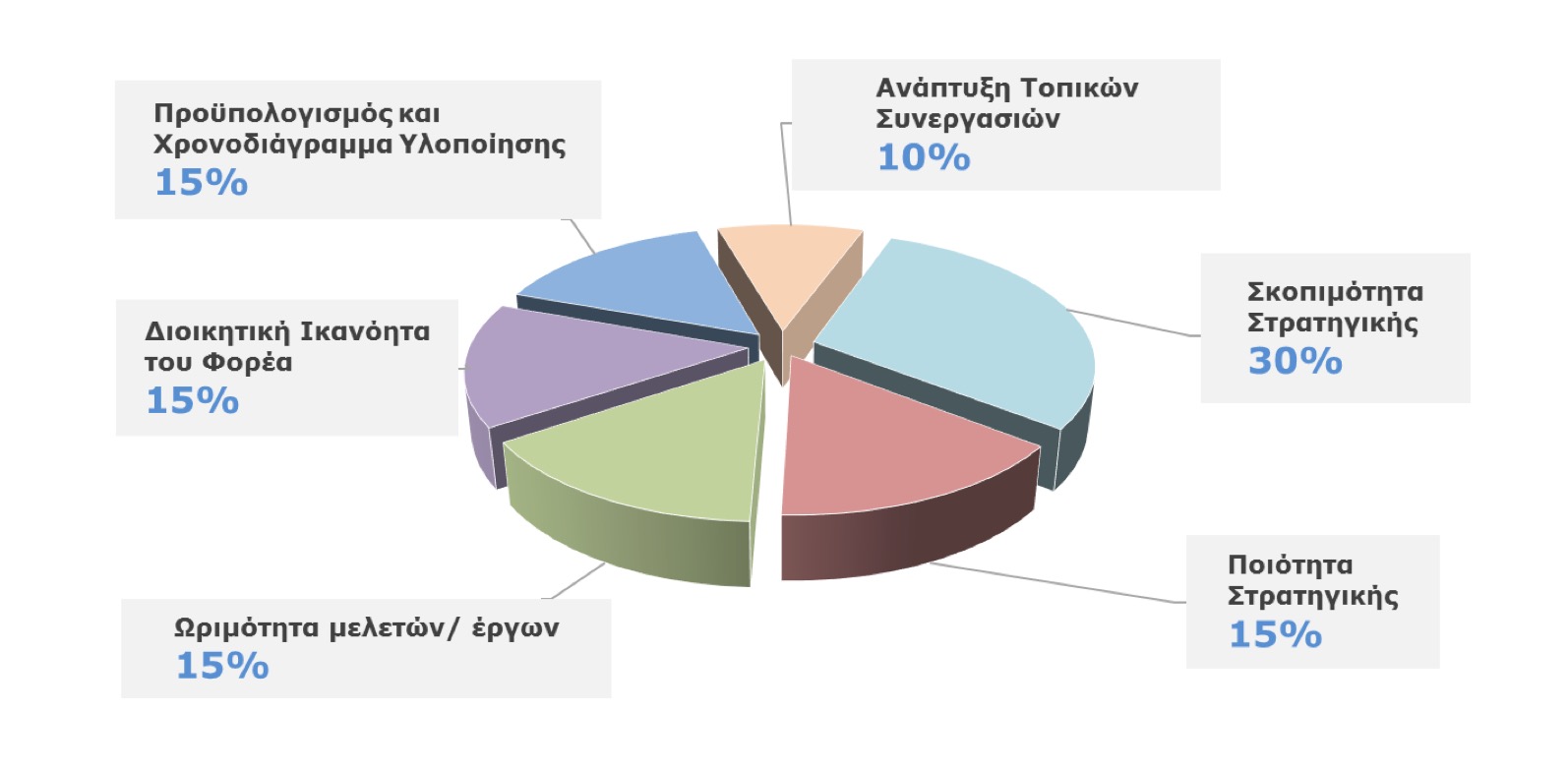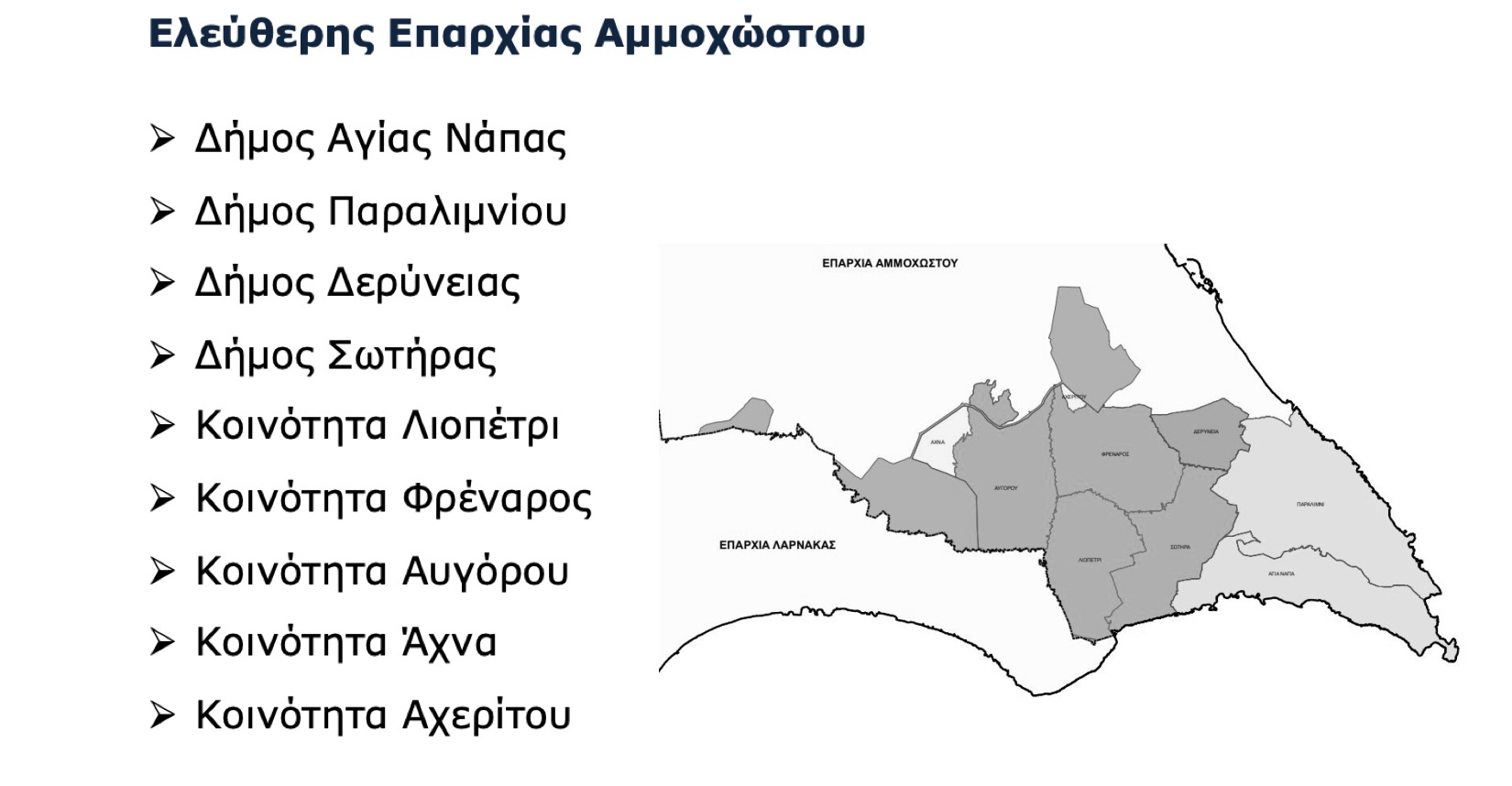The unified strategy "Integrated Spatial Development" (OHA) of the free province of Famagusta is in the process of preparation. The OXA strategy will be prepared in collaboration with the nine Municipalities and Communities of the province (ie the Municipalities of Ayia Napa, Paralimni, Deryneia and Sotira and the Communities of Frenaros, Avgorou, Liopetri, Acheritos and Achnas), in the context of an invitation from the Ministry of Interior Programming Period 2021-2027.
The aim of the OXA strategy is to develop joint actions for the unified development of the province, as well as to address the common existing problems facing the region for the next seven years.
As part of the strategy, in order to better plan the actions to be developed, the citizens of the free province of Famagusta are encouraged to complete a short questionnaire in order to plan the appropriate actions in the OXA strategy of the free province of Famagusta, which take into account the needs of the area.
Every citizen can fill in the questionnaire electronically CLICKING HERE
(See more information on all European Union Resource Investment Planning 2021-2027 - Cohesion Policy and Common Fisheries Policy as prepared by the Directorate-General for European Programs, Coordination and Development CLICKING HERE)
Opportunities from the European Regional Development Fund
An important factor in shaping Integrated Spatial Development is of course the opportunities from the European Regional Development Fund with the programming period 2021-2027.
The five ERDF policies are:
- A smarter Europe by promoting innovative smart economic transformation
- Strengthening research and innovation capabilities and leveraging advanced technologies;
- Exploiting the benefits of digitization for citizens, businesses and governments;
- Strengthening the growth and competitiveness of SMEs
- Development of skills for smart specialization, industrial transition and entrepreneurship;
- A greener Europe with low carbon emissions by promoting equitable clean energy, green and blue investment, cyclical economy, climate change adaptation and risk prevention and management
- Promotion of energy efficiency measures
- Promotion of renewable energy sources
- Development of smart energy systems, networks and storage equipment at the local level
- Promoting adaptation to climate change, risk prevention and disaster resilience;
- Promoting sustainable water management
- Promoting the transition to a circular economy
- Enhancing biodiversity, green infrastructure in the urban environment and reducing pollution
- A more interconnected Europe through enhanced mobility and regional ICT interconnections
- Enhancing digital connectivity
- Development of sustainable, climate resistant, smart, safe and intermodal TEN-T
- Development of sustainable, resilient to climate change, smart, safe and intermodal national, regional and local mobility, with better access to TEN-T and cross-border mobility
- Promoting sustainable multimodal urban mobility
- A more Social Europe through the implementation of the European Pillar of Social Rights
- Enhancing labor market efficiency and access to quality jobs through the development of social innovation and infrastructure
- Improving access to quality inclusive education, training and lifelong learning services through infrastructure development
- Even greater socio-economic integration of marginalized communities, migrants and disadvantaged groups, through the implementation of integrated measures concerning, inter alia, housing and social services
- Ensure equal access to health care through infrastructure development, including primary health care.
- A Europe closer to the people, through the promotion of sustainable and integrated urban, rural and coastal development, and through the support of local initiatives.
- Enhancing integrated social, economic and environmental development, cultural heritage and security in urban areas;
- Enhancing integrated social, economic and environmental local development, cultural heritage and security, including rural and coastal areas through local development at the initiative of local communities
What is Integrated Spatial Development?
It is a spatial strategy for dealing with the problems of specific spatial units, with the aim of improving the economic situation of the daily life of citizens and the preservation of the natural environment, based on sustainable development.
Integrated Spatial Investments are a tool for integrated spatial development - sustainable urban development and are financially supported by the European Social Fund, the European Regional Development Fund, the Cohesion Fund, and additionally by the EAFRD and the EMFF, through combined investments, with reference to at least two Priority Axes and a combination of one or more complementary investment priorities, from different thematic objectives, of one or more Operational Programs.
What are the eligibility criteria for the corporate scheme?
1. Timely submission of the Strategy
2. Submission of the document on the basis of the proposed structure.
3. Eligibility of the Corporate Scheme
The areas for which such Strategies will be prepared should present specific challenges and / or problems that need to be addressed in a holistic way, or distinguished by significant development opportunities, which can be exploited and maximized based on an integrated development plan. .
The corporate scheme must meet the following criteria:
- Total Population over 25.000 inhabitants
- Cooperation of at least two Local Authorities (ATA)
4. Submission of organizational chart and task list (Total administrative capacity of the scheme to implement the strategy.)
5. Participation in the preparation and implementation of the strategy (The clarity and completeness of the methodology of consultation, information and activation of the stakeholders is examined)
6. Integrated nature and Compatibility of the Strategy with the proposed EU Policy Objectives (see Annex 1) (Examines whether, in addition to Policy Objective 5 (ERDF), the Strategy contributes to at least two (2) additional specific objectives from Policy Objectives 1 to 4 of the ERDF and Cohesion Fund (the two specific objectives may fall under the same Policy Objective).
What are the Evaluation Criteria of OXA Proposals?

OXA intervention area of Famagusta province

Famagusta.News
